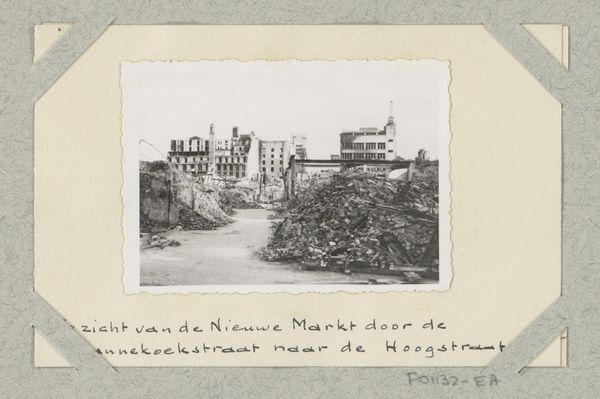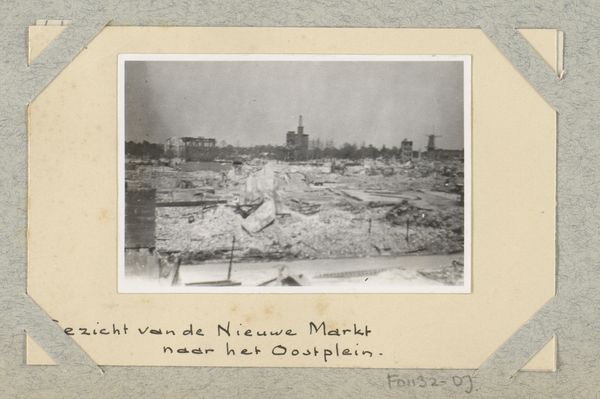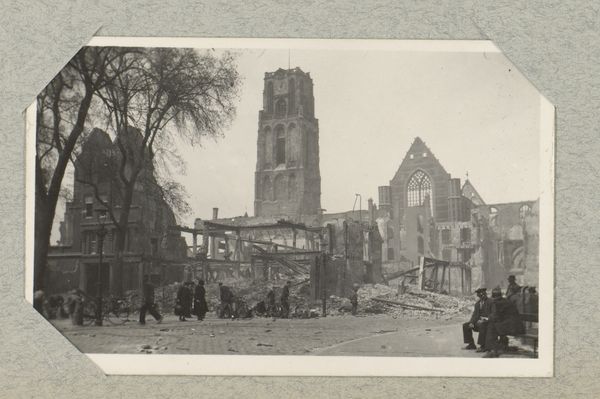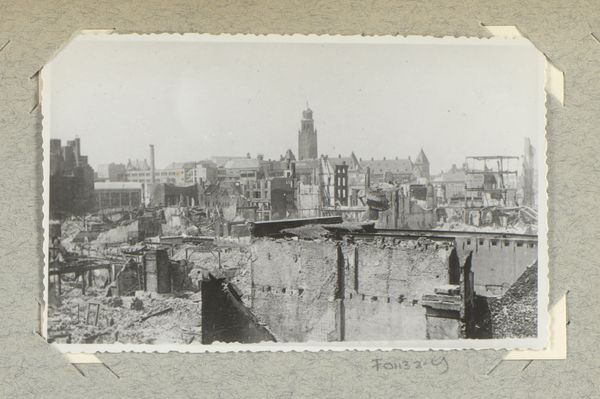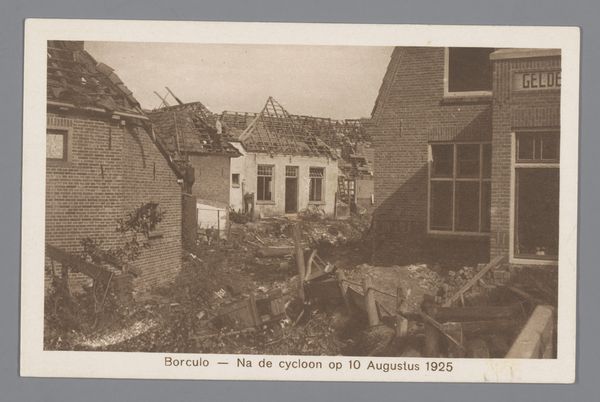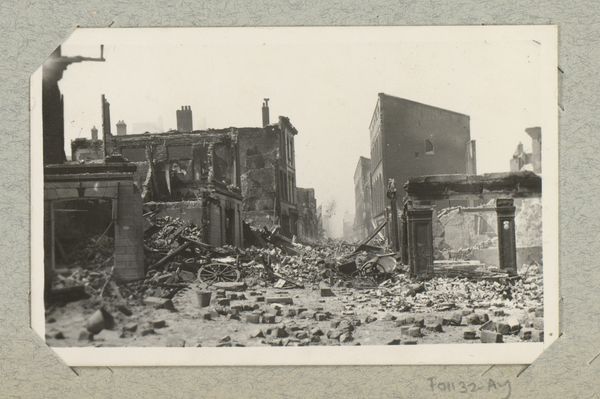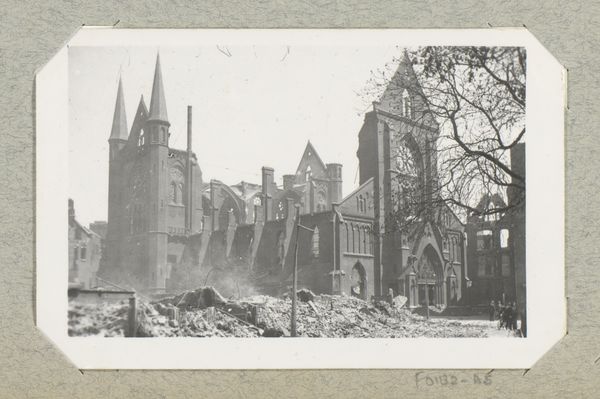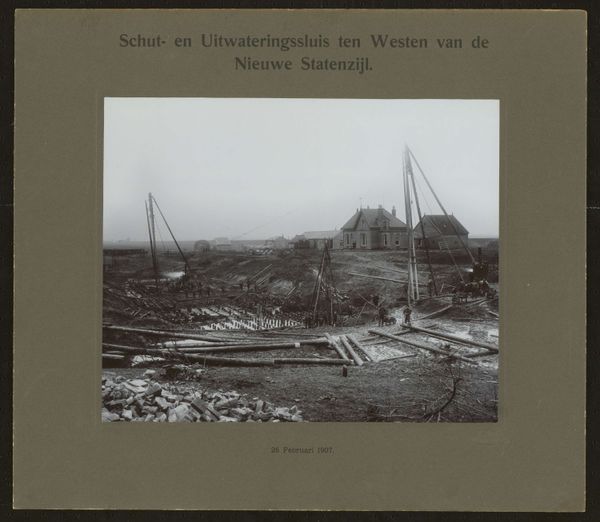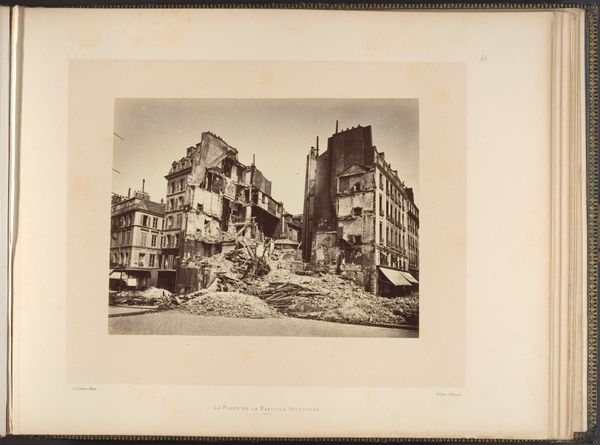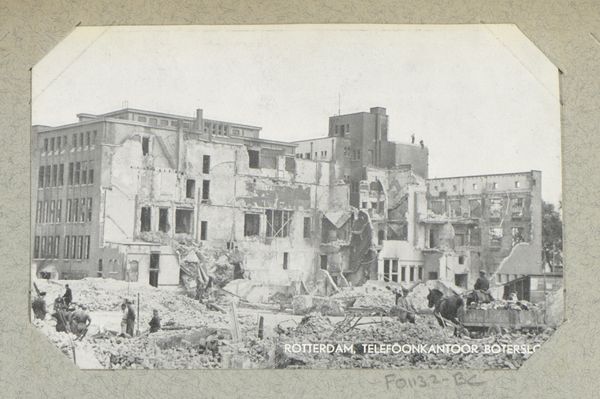
Ruïnes van de Spaarbank en Gemeentebibliotheek, gezien vanaf de Pannekoekstraat te Rotterdam c. 1940 - 1945
0:00
0:00
photography, gelatin-silver-print
#
photography
#
gelatin-silver-print
#
cityscape
#
history-painting
#
realism
Dimensions: height 63 mm, width 85 mm
Copyright: Rijks Museum: Open Domain
Editor: This gelatin-silver print, titled "Ruïnes van de Spaarbank en Gemeentebibliotheek, gezien vanaf de Pannekoekstraat te Rotterdam," was captured by J. Nolte sometime between 1940 and 1945. Looking at the cityscape, you immediately sense devastation. How does this image fit into the broader context of history painting, given its realistic style? Curator: It's important to consider the socio-political forces at play. Rotterdam was heavily bombed during the war, and photography became a crucial tool for documenting the destruction. It moved beyond simple record-keeping; these images became a form of visual testimony. Is Nolte aiming for pure documentation, or is something more being communicated through composition and tone? Editor: I see it more than just documentation. There’s a somber tone. It makes you consider the implications, I think. How these ruins impacted the identity and resilience of the people of Rotterdam? Curator: Exactly. This image likely played a public role in shaping memory and identity. The Spaarbank and library weren't just buildings; they represented stability, knowledge, and community. Consider how institutions chose images like these. Did they intend to foster grief, promote rebuilding efforts, or perhaps both? Editor: So, it is about institutional control. And if it was commissioned, was the aim information, or a political goal to garner support or reshape historical narrative. Right? Curator: Precisely. The choice to frame the ruins from Pannekoekstraat positions the viewer in relation to this destroyed symbol of community. Ask yourself, what is the relationship between photography as objective evidence and a deliberately framed point of view with a specific political charge? Editor: I hadn't thought about it like that before. I saw it just as an image, but now it’s clearly embedded in all sorts of sociopolitical strategies and meanings. Curator: Reflecting on the past allows us to contextualize our current perspectives. We've explored how it shaped cultural memory and identity within that period. Thank you.
Comments
No comments
Be the first to comment and join the conversation on the ultimate creative platform.

